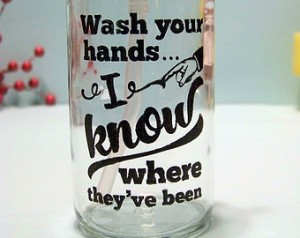People who give massages hopefully like receiving massages. I know I do. When my therapist friends are out of town or otherwise engaged, I have a few places I will slip into to try their hands.
I found one therapist purely by chance who really knows how to do meridian and nerve-based massages, something my low back appreciates greatly. So I was surprised when I got into the shower one day a few hours after my massage and found large, red welts on my back, suggesting that I had teenage cystic acne.
In the mirror I saw big, red and itchy bumps all over my back, especially on the lines of the sideline meridians. I had either had a reaction to the massage oil or somehow some sort of bacteria had been introduced into the skin during the massage.
I thought, probably like many clients, that I should simply not visit this therapist again. Something had been dirty, the oil, the bottle, the hands, something. I had showered just before the massage, so I did not think it was my skin. Oh well.
Then perhaps, like some clients, I though about the affection I had developed for this particular therapist. I liked her style and her results. I decided to see her again and tell her about my reaction.
Once we were alone in the massage room, I explained that I had some sort of reaction to the massage and had been nursing the bumps with arnica and witch hazel. I showed her the pattern on my back. She looked stunned.
“But I always wash my hands, and I make sure the linens are clean and fresh.” she said. I pointed at the oil bottle. “Do you wash it? Wipe it? Does anyone else use it?”
Hmm. That was possible, she said.
As massage therapists we see a lot of people and often use the same bottles and oils on each client. Can someone have sensitive skin? Sure. But what if it was the oil layer on the outside of the bottle? What if the oil itself was contaminated with bacteria?
No sure answers there. But here are the basics of keeping clean between massages and during successive massages in a busy practice or clinic.
- Always wash hands after and before a session. Washing hands at the end of a session is a half-measure. You will handle materials, perhaps dirty linens, doorknobs, credit card machines, etc. before your next massage. Wash hands again before you start.
- Wash the exterior of your oil bottle as well, especially if someone else is using your room and supplies on your days off. Slick bottles can transfer bacteria to all of your clients that day and beyond. I wash oil bottle every day and use anti-bacterial wet wipes to clean bottles between clients.
- Never stack linens for more than one client. Some therapists think they have found a great way to avoid scrambling for linens by putting five or six settings on the table. Well, no certain infections, such as scabies, can be passed from one sheet to another. You don’t want to be explaining your timesaving system to an inspector from the health department.
- Hand washing is done with warm to hot water and soap and requires rubbing both hands together for at least 15 seconds. Rinsing, one-handed washings, or other half-measures don’t count. Over the years I have learned to follow-up my hand washing with a cold-water rinse. Good for my poor paws.
- When using a jar or tub of massage cream, use a clean or disposable spatula to scoop from the jar. If you stick your fingers in the jar, you are cross-contaminating any bacteria to your whole client book for that day and as long as you use that jar. Cover the jar in between scoops. Better yet, use oil with a pump or flip-top.
- Use cleaning cloths with hot water and a cleanser or anti-bacterial wet wipes on common surfaces such as towel warmers, crock pots, essential oil bottles, anything in the room that might be touched by oily hands. If you only clean when it is slow, or you rely on a cleaning crew for these details, you may be spreading bacteria and other germs.
- Some massages start with a foot massage, either because of the client’s symptoms, wishes or the therapist’s training. Tell your client as you finish their feet you are going to wash your hands and will be back in a moment. Some people have fungal infections, bacteria, etc., or go barefoot, and your foot massage can spread skin infections to other areas of the body.
Better safe than sorry. By the way, I decided to stick with my therapist, largely because she was concerned and eager to learn how to prevent more skin reactions. Just like a client, I appreciated her attitude and its promise for future reaction-free massages. Cleanliness fills your book.
